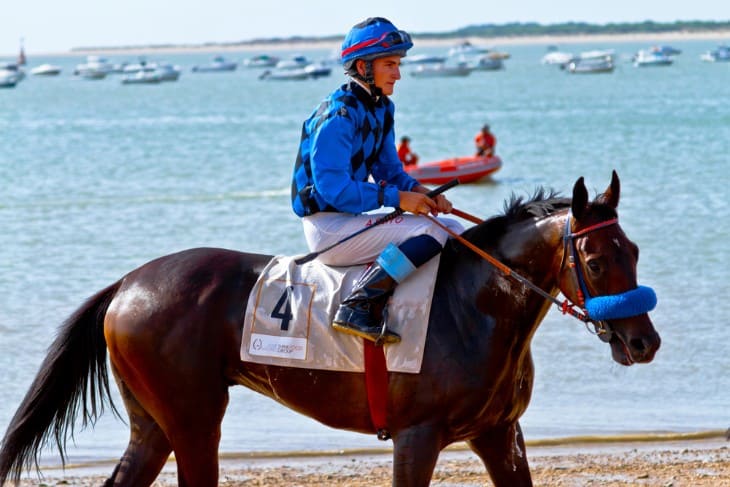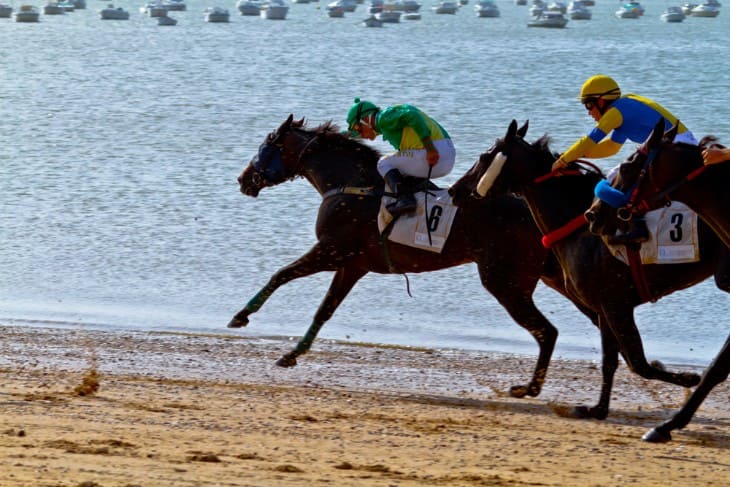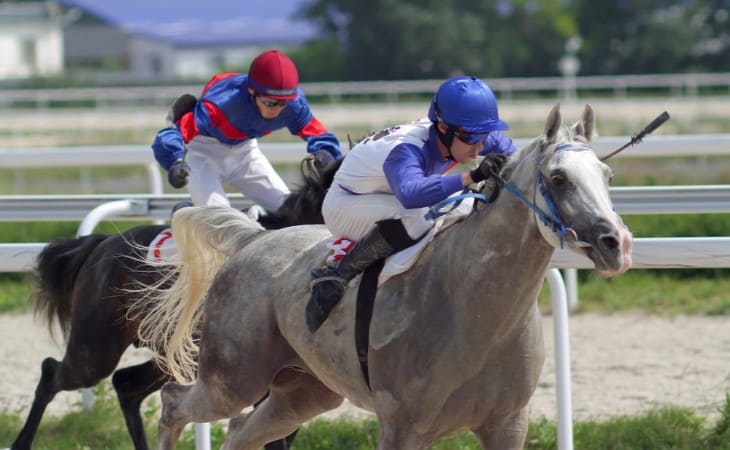- Traditions and Customs at Racing Events
- Fashion and Style: A Day at the Races
- The Role of Music and Entertainment in Racing Festivals
- Gastronomy and Culinary Delights at Racing Events
- The Evolution of Horse Racing Competitions
- Prominent Horse Racing Festivals Around the World
- The Social Dynamics of Horse Racing Events
- Conclusion
Traditions and Customs at Racing Events
Horse racing festivals are steeped in tradition and customs that contribute significantly to their unique atmosphere. These traditions vary widely from one festival to another, often reflecting the local culture and history. In Britain, each racing event has its own set of customs and dress codes, which are rigorously upheld. The Royal Ascot, for example, is known for its strict dress code, with top hats and tails for men and elaborate hats for women.
Another key aspect of these festivals is the betting culture. Betting on horses is an integral part of the experience, adding an element of excitement and anticipation. This tradition dates back several centuries and remains a central component of the racing festival atmosphere. The betting process itself, from studying the racing form to placing bets at bookmakers' stands, is a ritual that many attendees passionately engage in.
Furthermore, each horse racing festival often has its own set of unique customs. For instance, the singing of traditional songs, the serving of specific local cuisines, and the conducting of special ceremonies all contribute to the distinctiveness of each event. These customs not only enrich the experience for attendees but also serve to preserve and celebrate local heritage and traditions.
The festival atmosphere of horse racing events significantly contributes to their economic impact. These festivals are not just sporting events; they are substantial commercial enterprises that generate significant revenue and create numerous jobs. The direct economic impact is most visibly seen in the racing industry itself, which includes the breeding, training, and care of racehorses. Additionally, the revenue generated from betting, entry fees, and sponsorships forms a significant portion of the income associated with these events.
Beyond the immediate industry, horse racing festivals also boost local economies. Hotels, restaurants, and local businesses often see a surge in patronage during these events. For instance, the Cheltenham Festival in the UK is estimated to bring in millions of pounds to the local economy, with visitors spending on accommodation, dining, and shopping. This influx of visitors provides a substantial boost to the local hospitality and retail sectors, demonstrating the far-reaching economic impact of these festivals.
Fashion and Style: A Day at the Races
The fashion and style on display at horse racing festivals are as integral to the event as the races themselves. The festival atmosphere is palpably influenced by the sartorial choices of attendees, with each racing event having its own fashion norms and expectations.
- Dress Codes: Many racing festivals have specific dress codes. For example, the Royal Ascot's Royal Enclosure requires men to wear morning dress and women to wear formal daywear.
- Fashion Shows: Some events, like the Grand National, have become known for impromptu fashion shows, with attendees showcasing extravagant and stylish outfits.
- Hats and Accessories: Hats are a standout feature at these events. Ladies' Day at various festivals, particularly Ascot, is famous for elaborate and creative headwear.
- Designer Labels: High-fashion and designer labels are often on display, with many using these events to showcase their latest collections.
The fashion element of these festivals extends beyond mere clothing; it is a display of culture, tradition, and personal expression. This focus on style contributes significantly to the overall experience, making each visit to the races a unique and memorable event.

The Role of Music and Entertainment in Racing Festivals
Music and entertainment play a pivotal role in enhancing the festival atmosphere at horse racing events. Beyond the excitement of the races, these festivals offer a plethora of entertainment options that cater to a wide audience. Live music performances are a staple at many horse racing festivals, with bands and artists performing throughout the event. These performances range from classical and jazz to contemporary and pop, ensuring there is something for every attendee.
The entertainment at these festivals extends beyond music. Many events feature a variety of shows, from traditional dance performances to modern entertainment acts. For instance, some festivals include equestrian shows, displaying horsemanship and tricks, which tie in seamlessly with the theme of the event. These entertainment acts contribute significantly to the lively and festive environment, making the racing festival a holistic experience that goes beyond horse racing.
Gastronomy and Culinary Delights at Racing Events
The culinary experience is an essential component of the festival atmosphere at horse racing events. Each festival offers a range of dining options, from fine dining to casual street food, ensuring a diverse gastronomic experience for attendees.
- Fine Dining: Many racing festivals offer high-end dining experiences with menus crafted by renowned chefs. For example, the Royal Ascot boasts luxurious restaurants and private boxes where gourmet meals are served.
- Local Cuisine: These events often showcase local culinary specialties, providing attendees with a taste of the region's gastronomy.
- Street Food and Casual Dining: For a more casual dining experience, food stalls and trucks offer a variety of quick and tasty options, ranging from traditional British fare to international cuisines.
- Bars and Lounges: To complement the food, bars and lounges serve a selection of beverages, including signature cocktails, fine wines, and craft beers.
This focus on culinary excellence adds an important dimension to horse racing festivals, making them not just a feast for the eyes and ears but also for the palate. The variety of food and drink available ensures that every visitor can find something to their liking, enhancing their overall experience at the event.
The Evolution of Horse Racing Competitions
The evolution of horse racing competitions over the years has significantly influenced the festival atmosphere at these events. Initially, horse racing was a straightforward contest of speed among a small number of horses and riders. However, as the sport gained popularity, the nature of the competitions became more complex and varied. This evolution has been driven by advances in breeding, training, and racecourse design, leading to more competitive and exciting races.
The introduction of different types of races, such as flat racing, steeplechase, and harness racing, has added variety to the sport, catering to different interests and preferences. The development of international competitions has also expanded the sport's reach, bringing together the best horses and jockeys from around the world. This international aspect has added a new level of excitement and prestige to horse racing festivals, making them major events in the global sporting calendar.

Prominent Horse Racing Festivals Around the World
Horse racing festivals are celebrated globally, each with its unique character and traditions, yet all contributing to the vibrant festival atmosphere of the sport. These events are not only about the races but also about the culture, fashion, and social interactions they foster.
- The Royal Ascot, UK: Known for its royal patronage, strict dress code, and top-tier racing, the Royal Ascot is a highlight of the British social and sporting calendar.
- The Kentucky Derby, USA: Famous for its mint juleps and extravagant hats, the Kentucky Derby is often referred to as "The Most Exciting Two Minutes in Sports."
- The Melbourne Cup, Australia: Dubbed "The Race That Stops a Nation," this event is celebrated throughout Australia with various festivities.
- The Dubai World Cup, UAE: Known for its opulence and high-stakes racing, the Dubai World Cup is a relatively new addition to the racing calendar but has quickly gained prominence.
Each of these festivals has its distinct charm and traditions, making them bucket-list events for horse racing enthusiasts and socialites alike. They are not just sporting events but cultural phenomena that draw crowds from all over the world.
The Social Dynamics of Horse Racing Events
The social dynamics at horse racing events significantly contribute to the festival atmosphere. These gatherings are not just about watching the races; they are also about the interactions and experiences among the attendees. The social aspect of these events can be broken down into several components:
- Networking and Socialising: Horse racing festivals provide a platform for people from different walks of life to meet and interact. From casual spectators to industry professionals, these events are ripe with opportunities for networking and socialising.
- Celebrity Sightings: Many racing events attract celebrities and public figures, adding a touch of glamour and excitement.
- Group Outings and Corporate Hospitality: Racing festivals are popular venues for corporate events and group outings, offering an enjoyable and engaging setting for both business and leisure.
- Family-Friendly Activities: Many festivals also cater to families, with activities and areas designated for children, making them inclusive for attendees of all ages.
These social dynamics play a crucial role in the overall experience of horse racing festivals, creating a vibrant and engaging atmosphere that extends beyond the excitement of the races.
Conclusion
In conclusion, the exploration of various aspects of horse racing festivals underscores their multifaceted nature. These events are more than just sporting competitions; they represent a rich tapestry of culture, tradition, and social interaction. From the historical origins and economic impact to the vibrant festival atmosphere marked by fashion, cuisine, and entertainment, horse racing festivals are dynamic and integral components of the cultural landscape. The ongoing evolution of these festivals, driven by technological advancements and a growing focus on sustainability, ensures their relevance and appeal continue to thrive.








